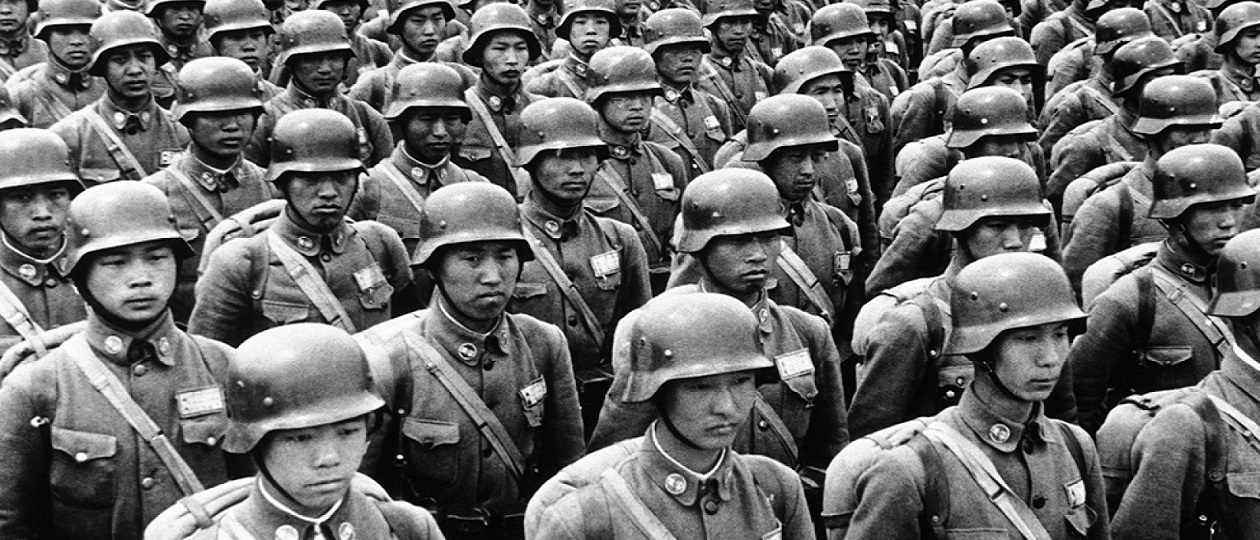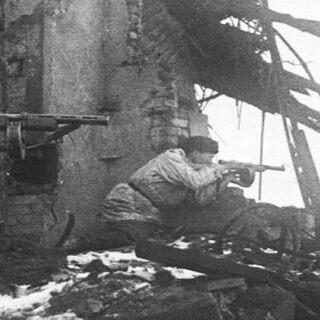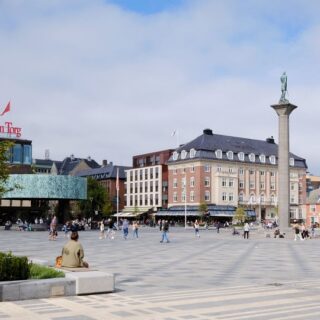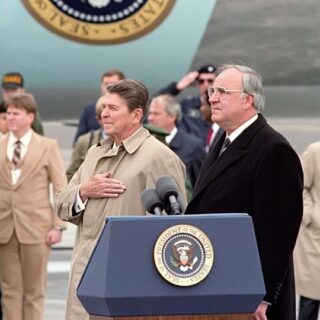
Japan’s participation in World War II is still not well understood. Perhaps because the pre-war policy of the Land of the Rising Sun was distinguished by complex turns and inconsistencies.
By the 1930s, the Meiji Revolution had come to its end: an acute shortage of markets, a difficult economic situation due to the Great Depression. The confrontation between the elites has even penetrated the Armed Forces, where there has been a fierce rivalry between the army and the navy, in fact, political forces that reflect the interests of various elite groups.
The spectrum of political forces was very diverse, but the main acting force was the unification of the zaibatsu monopolies and the samurai, which turned into a kind of military caste. This association was aimed at conquering new markets and colonies. Clashes between this union and opposing trade unions and parties of the left and democratic wing (1918-1925) ended with repressions against leftist organizations and the adoption of the Law on the Protection of Public Peace, which threatened ten years in prison for members of organizations who did not agree with the existing system. The cabinet of General Tanaka (田中義), chairman of the Rikken Seiyukai, secured an imperial decree in 1928 for the death penalty for “troublemakers”.
However, the repression did not lead to political consolidation, and there were disagreements in the Japanese leadership that took on a sharp form. The “moderates”, then the “mad ones” came to power against the backdrop of a change of governments and outbursts of extremism by National Socialist-minded officers who killed political opponents and intimidated the “moderates”.
The crisis came to a head with the victory of the “moderates” in the general election in February 1936. The Rikken Minseito Party (立憲民政党, “People’s Rule Party”) received 205 deputies instead of the previous 127, while the “militarists” represented in the Rikken Seiyukai (立憲政友会, “Party of Friends of the Constitutional Government”) received only 174 instead of 242. The election results spoke of anti-war sentiment in the country. And then the National Socialist-minded officers went on a mutiny.
The February 26 mutiny (二·二六事件 Ni-niroku jiken) began at night before dawn. The group of Lieutenant Yasuhide Kurihara (栗原安秀) broke into the house of Prime Minister Okada Keisuke (岡田 啓介), but not finding the hiding owner, killed his secretary. Politicians from the previously compiled proscription list were killed: Inspector General of the Army Watanabe Jotaro (渡辺錠太郎); Minister of the Privy Seal Saitō Makoto (斎藤実); Finance Minister Takahashi Korekiyo (高橋是清).
About 1,500 soldiers and officers took part in the coup under the slogan “Showa restoration” (昭和維新), that is, the current emperor, and the motto “Sonno tokan” (尊皇討奸, “respect the Emperor, overthrow the evil”). The putschists declared that by killing leading politicians who were declared responsible for the difficult situation in the country, it was necessary to overcome corruption and the dominance of monopolies and “help the emperor.” They managed to capture the center of Tokyo, there were attempts to capture the residence of the prime minister and the imperial palace. Japan was decapitated for three days: the residence of the Prime Minister, the General Staff, the Ministry of War, the main police department and a number of other state institutions could not function. What to do then was unclear, and the rebellion froze in complete inaction.
Meanwhile, sympathy for the conspirators in the generals was extremely strong, no one spoke out against them, moreover, Minister of War Yoshiyuki Kawashima (川島 義之) distributed the rebels’ appeal throughout the army. A number of senior army officials met with the putschists and expressed their approval of their decisive actions. Only on the third day, the emperor, irritated by the inability to cope with the rebellion, ordered the army to take decisive action (the first order to suppress the putsch on the 26th was, in fact, ignored by the Minister of War).
The rebellion was suppressed, taking advantage of the rivalry between the fleet and the army. The fact that three admirals were killed during the putsch made the conflict particularly acute. The combined fleet entered Tokyo Bay, and the intention to land troops was announced. The military leadership immediately took up the position of protecting the emperor, and an order was issued throughout the army to suppress the rebellion. Through the commandant of the city, the emperor’s appeal to the soldiers was announced, and those, for the most part, who participated only on the orders of their commanders, began to return to the barracks. By noon on the 29th, the mutinous officers were left without soldiers. They refused hara-kiri and went to court, arguing that they would be able to state their position in court.
Although the putsch of radical officers was suppressed, and 19 of its participants were hanged, the influence of the army on political decision-making greatly increased and became decisive. The outside world did not attach much importance to the rebellion, few understood its real essence. Among them is Rihird Sorge, who sent to the Center an analysis of the causes of the rebellion and the forces behind it. He predicted that now a “big war” was unavoidable and an invasion of China was imminent.
The newly arrived government was much less moderate than the previous one. Despite the suppression of the rebellion, some demands of the putschists began to be implemented, for example, demonstrations and strikes were banned. However, as before, this did not lead to the consolidation of the politicum, which now consisted exclusively of the “right” forces. Although the general course for war was shared by all, there were fierce disputes over the objects of war. In the war against the USSR, suicidal without the resources of China, one could count on the non-intervention of the Western powers, the conquest of Southeast Asia threatened with war with them, the conquest of China affected the interests of the United States. The leadership of the Kwantung Army (関東軍), reflecting the interests of the zaibatsu monopolies, was in favor of a war against China.
This struggle of opinions caused numerous reshuffles in the government and increased conflicts in the military leadership. Finally, the emperor and the leadership of the army agreed on the candidacy of Prince Konoe Fumimaro (近衞文麿), close to the emperor and closely associated with concerns, a supporter of the seizure of China and the Indochinese colonies of Western countries. The position of the Kwantung Army won, first to conquer China and relying on its resources, to carry out further conquests. Under a new prime minister, the disputes ended, and in 1937 Japan’s war with China began.
Subsequently, the position of the Kwantung Army led to a clash on Lake Khasan and the Khalkhin Gol River. The winner of Khalkhin Gol, Georgy Zhukov, highly appreciated the combat and moral qualities of Japanese soldiers and junior officers, their perseverance in battle, but considered the officers to be of little initiative and prone to stereotyped actions. But could it be otherwise, if in the army, as in the entire elite, there were constant shuffles? Japan’s war developed extremely inconsistently, following internal political contradictions, and led to defeat. “A house divided against itself cannot stand.”
Interestingly, after the war, having carried out a real cultural revolution, rallying the people and the elite, creating a new type of economy, Japan was able to conquer the markets of Europe and America in the 70s without any war. Goals never achieved in the war were achieved by economic, cultural and political means. The “Japanese miracle” made the Land of the Rising Sun a world standard of quality, a mega-brand of Eastern civilization.





